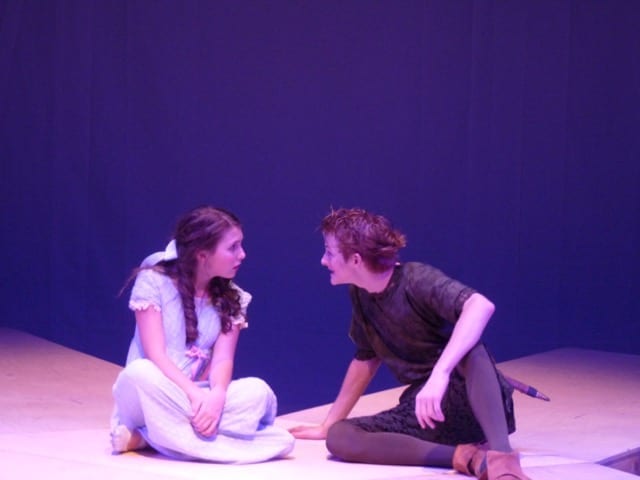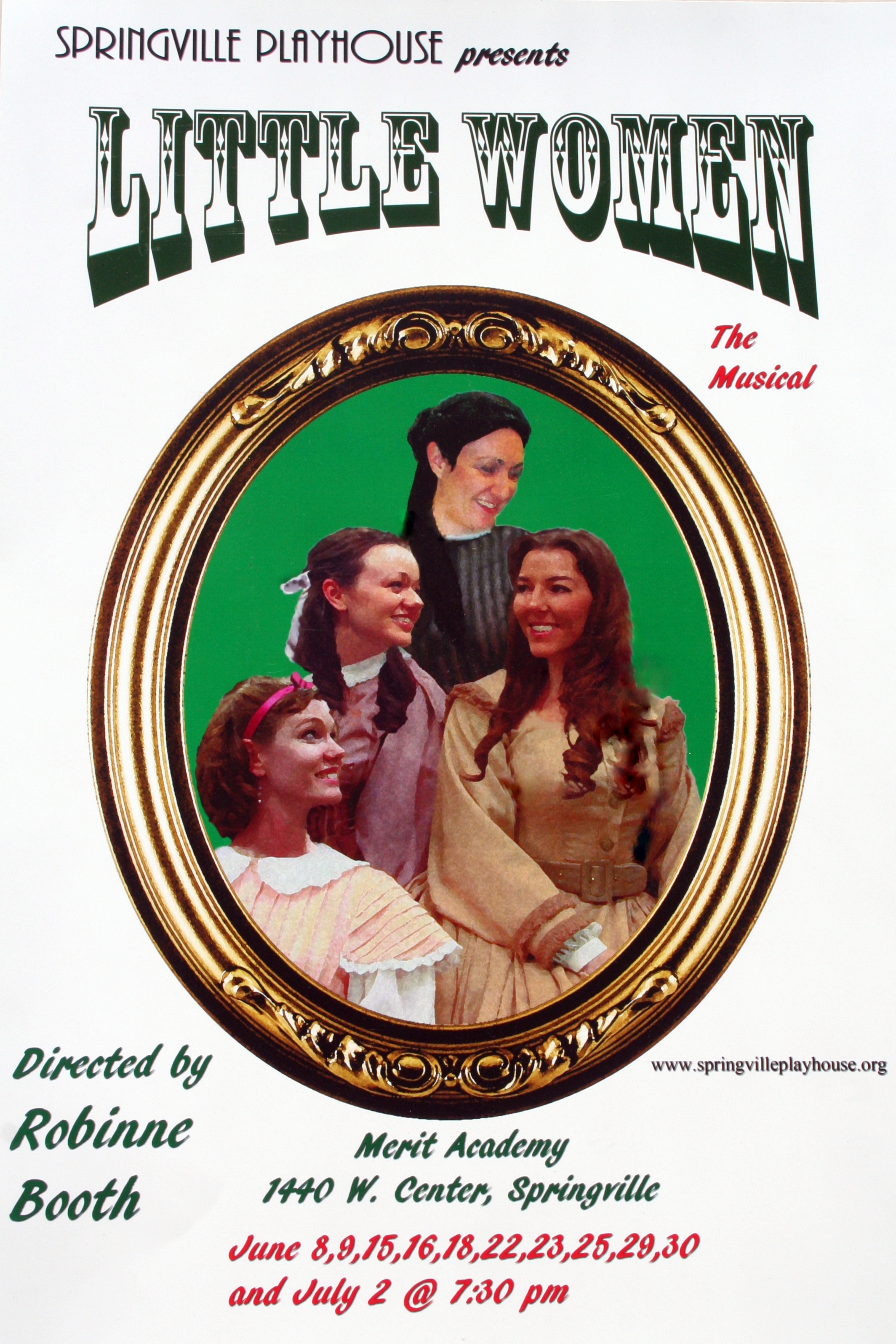SOUTH SALT LAKE CITY — One of the most beloved plays for children of all-time, Peter Pan, draws crowds to the theatre based on title alone. Utah theatre audiences must note, however, that Utah Children’s Theatre’s production of Peter Pan is not the classic original by Scottish playwright J. M. Barrie. Rather, it is “a stage adaption of the classic story of Peter Pan.” This adaptation seems unnecessary given the quality of the original and the faults of the new version. This is not to say that this production, directed by Joanne M. Parker, lacks merit, but it is not one of Utah Children’s Theatre’s shining performances.
The play opens familiarly in the bedroom of the Darling children as their mother and father get ready for an evening out. In the process, the children’s nurse and beloved dog Nana is sent outside for the night, leaving them without a protector. Once the children are asleep, Peter Pan enters their bedroom with Tinkerbell and soon whisks the children away to Neverland, a far-off place that is home to Lost Boys, Indians, Pirates, and an agitated crocodile. The Lost Boys are happy to have Wendy for a mother, but are assaulted by the pirates—as are the Indians—and scenes of chaos in Neverland ensue. Over time, the Darling children want go back home to London and to take the Lost Boys with them. Peter Pan agrees, but the group is captured by the pirates during the journey back.
It is a story that invites humor, and there are generous opportunities for laughter in this production. The dog, Nana, played by Chelsea Fernandez, is comically large. Brandon Green delightfully utilizes physical comedy as both Mr. Darling and Captain Hook, and Cole Larson plays Peter Pan with enough whimsy, energy, and comic timing that I missed him whenever he was not on stage. The pirates and Lost Boys also invite laughter, but not as much as they might due to the fact that their group appearances on stage lack the crowd direction needed to focus the audience’s attention on significant moments. Every actor “gives it their all,” but it is all at the same time, resulting in scenes of chaos and mayhem. As a mother of three young boys I know that this is the reality, but in this instance, “holding the mirror up to nature” is detrimental to the production. There were many moments where I was unable to follow the dramatic action, and my four-year-old was similarly lost. Contributing to this was the use of British dialect and the high volume of the sound.
 Other elements of the production are able to hold the attention of the young audience, the most significant of which is the use of shadow puppetry. The effect is used magically to help the Darling children fly with Peter Pan over London and to show the crocodile attacking Captain Hook. (The crocodile also exists as a real character on the stage to the delight of young and old.) In addition, the use of the characters’ shadows are used in many scenes, an element of the production that nicely ties into the significance of Peter Pan’s shadow in the play’s introduction. Tinkerbell, herself is also a special effect. She exists only as a green light (which changes colors when angry or dying) and darts around the stage just like a fairy. This is the traditional and effective method of staging the enchanted icon, and despite her lack of humanity on stage, m son and I were able to form a connection that is felt in the beloved scene where her life is threatened and Peter Pan asks the audience to vocally assert their belief in fairies.
Other elements of the production are able to hold the attention of the young audience, the most significant of which is the use of shadow puppetry. The effect is used magically to help the Darling children fly with Peter Pan over London and to show the crocodile attacking Captain Hook. (The crocodile also exists as a real character on the stage to the delight of young and old.) In addition, the use of the characters’ shadows are used in many scenes, an element of the production that nicely ties into the significance of Peter Pan’s shadow in the play’s introduction. Tinkerbell, herself is also a special effect. She exists only as a green light (which changes colors when angry or dying) and darts around the stage just like a fairy. This is the traditional and effective method of staging the enchanted icon, and despite her lack of humanity on stage, m son and I were able to form a connection that is felt in the beloved scene where her life is threatened and Peter Pan asks the audience to vocally assert their belief in fairies.
 In addition to the inclusion of fairies, there is plenty of good fight choreography by Spencer Hohl to grab the attention of the little ones, the most engaging of which is the sword fight between Peter Pan and Captain Hook. The crowd fights are, admittedly, less spectacular. Similarly, the set design, by James B. Parker, which consists of three raised platforms, is far from noteworthy. By contrast, the costume design team, consisting of Christina Wilson, Cathy Maurer, Karissa Nelson, and Jessica Wilson, have done a splendid job communicating character with dress. The pirates were decked out in traditional garb, and the Lost Boys wore a hodge-podge of “found” items of nature and animal origin.
In addition to the inclusion of fairies, there is plenty of good fight choreography by Spencer Hohl to grab the attention of the little ones, the most engaging of which is the sword fight between Peter Pan and Captain Hook. The crowd fights are, admittedly, less spectacular. Similarly, the set design, by James B. Parker, which consists of three raised platforms, is far from noteworthy. By contrast, the costume design team, consisting of Christina Wilson, Cathy Maurer, Karissa Nelson, and Jessica Wilson, have done a splendid job communicating character with dress. The pirates were decked out in traditional garb, and the Lost Boys wore a hodge-podge of “found” items of nature and animal origin.
There is almost always a reason to go see a piece of live theatre, and there is more than one reason to see Peter Pan at Utah Children’s Theatre. In the end, however, this performance is an example of an unnecessary introduction to a story when the original work would provide so much more exposure to language and culture for our young audiences. In addition, this version was not staged as well as it might have been. I still support the theatre’s work, however, and it undoubtedly engaged my young son’s imagination. I had to stop him from restaging the play in our family room tonight with his brother so that they might go to bed. Oh, that they would never grow up!






